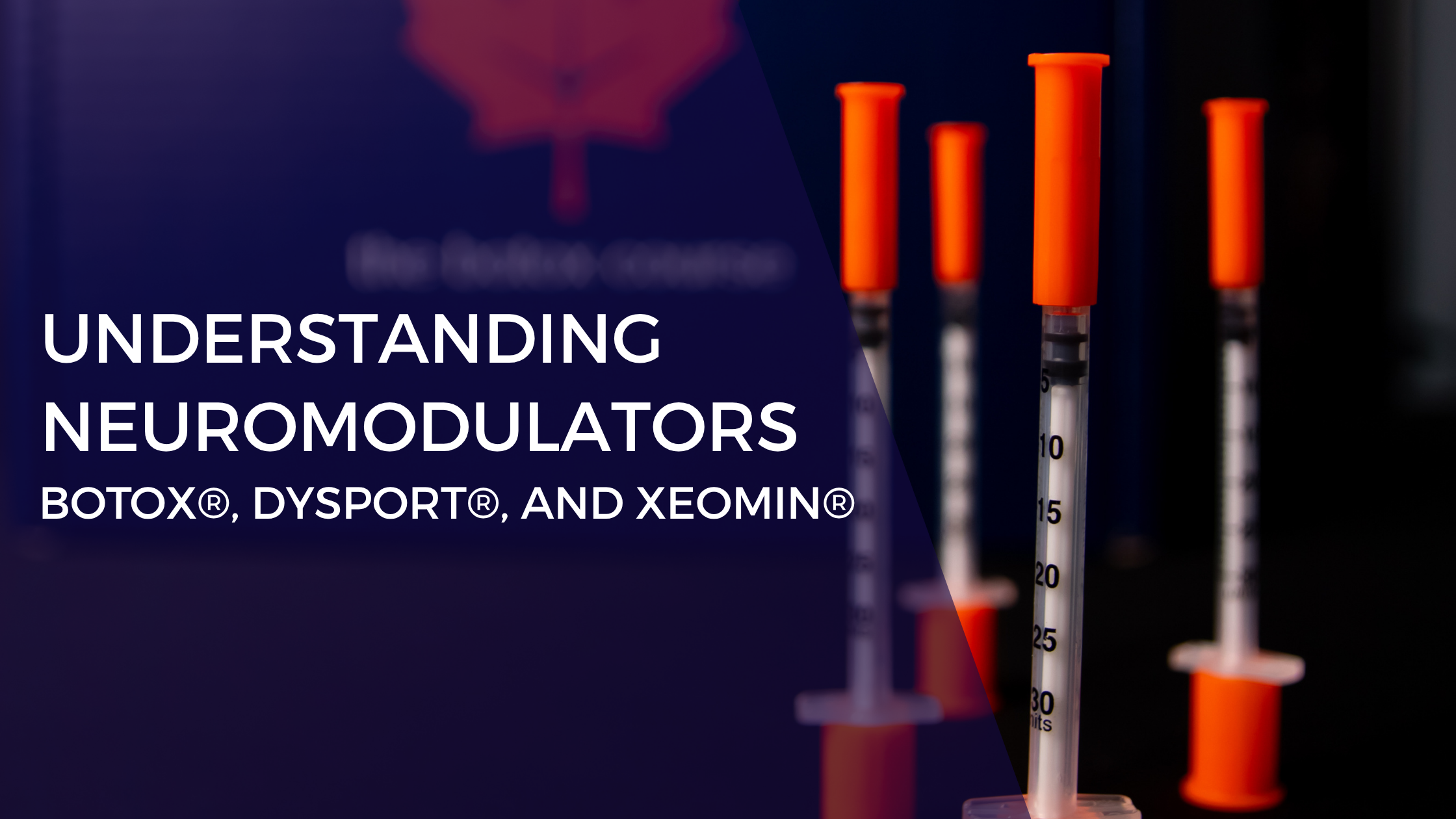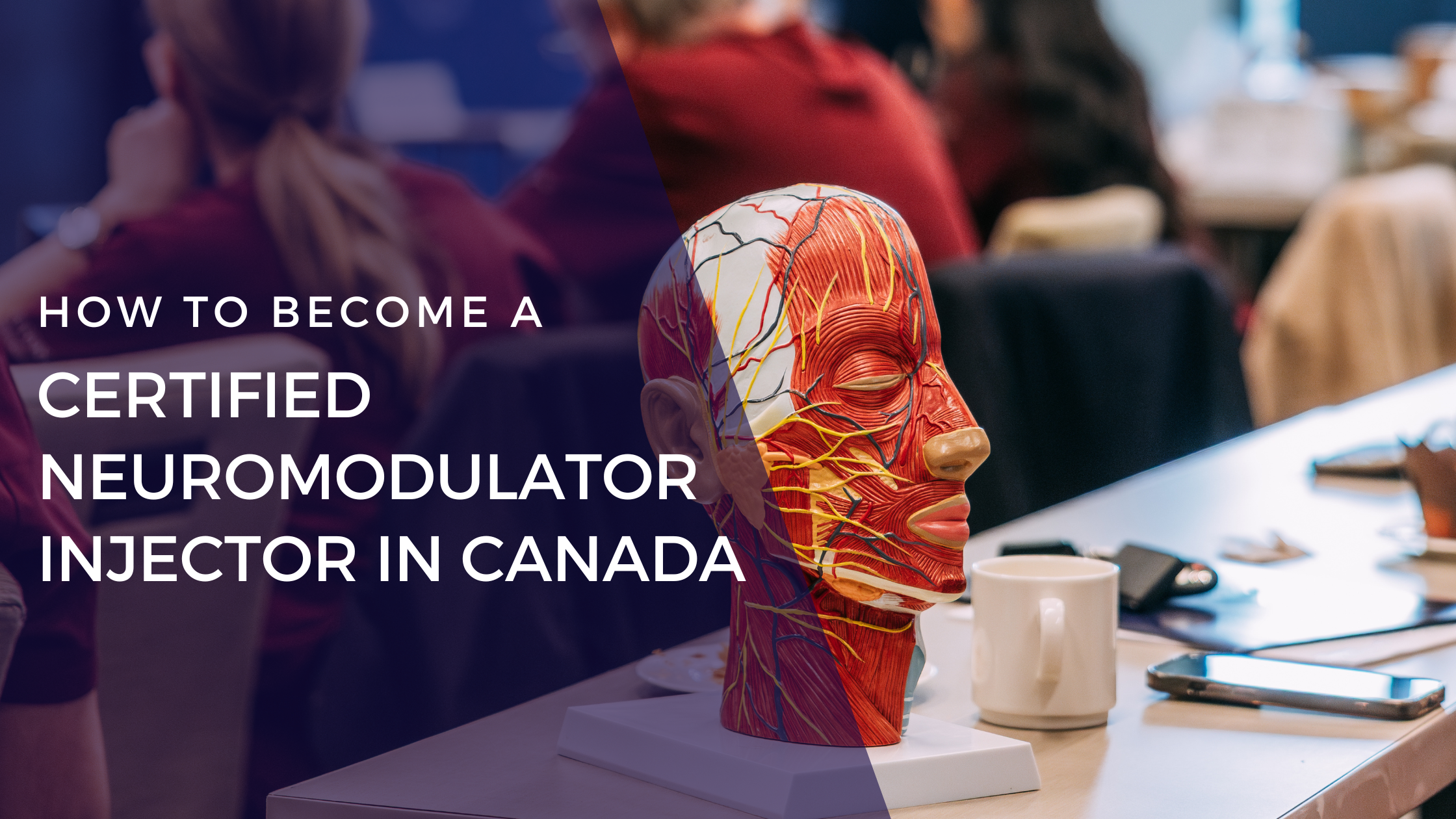
Understanding Neuromodulators: Botox vs. Dysport vs. Xeomin
What Healthcare Providers Need to Know Before Injecting
Dr. Andrew Dargie
Founder and Lead Educator
MD, FRCPC, Aesthetic Medicine Specialist
Dr. Andrew Dargie is a leading expert in medical aesthetics with over 15 years of experience. He has trained thousands of medical professionals worldwide and is recognized for his innovative injection techniques and commitment to patient safety.
Understanding Neuromodulators: Botox vs. Dysport vs. Xeomin What Healthcare Providers Need to Know Before Injecting
If you’re new to aesthetic medicine or expanding into injectables, chances are you’ve heard of the big three neuromodulators used in the USA and Canada: Botox®, Dysport®, and Xeomin®. All three are FDA and Health Canada approved for cosmetic and therapeutic purposes — but what makes them different? Here’s a breakdown of what you need to know as a licensed medical professional.
What Are Neuromodulators?
Neuromodulators are prescription-only medications derived from botulinum toxin type A. When injected into specific facial muscles, they temporarily block nerve signals that cause muscle contraction. This smooths dynamic wrinkles and helps achieve a refreshed, natural-looking appearance.
The three most popular brands in Canada — Botox® (Allergan), Dysport® (Galderma), and Xeomin® (Merz) — all share this same core function, but differ in terms of formulation, onset time, diffusion, and stability.
Botox®
As the original and most recognized brand, Botox® has set the standard in aesthetic medicine. It contains protective accessory proteins that surround the active neurotoxin molecule. This structure is thought to contribute to its longevity and reliability, but can also result in the development of neutralizing antibodies in some rare cases.
Pros:
Extensive research and history
High brand recognitionPredictable results
Considerations:
Contains complexing proteins
Refrigerated during transport and storage
Dysport®
Dysport® is known for its slightly faster onset and broader diffusion pattern. Many injectors find it useful for treating larger areas, such as the forehead, due to this wider spread. However, this can also be a disadvantage when high precision is needed.
Pros:
Fast onset (typically 2–3 days)
May require fewer injections in broad areas
Considerations:
Greater diffusion may increase risk of affecting unintended muscles
Can produce a slightly heavier effect
Xeomin®
Xeomin® is sometimes referred to as a “naked” or purer form of botulinum toxin. Unlike the others, it does not contain accessory (complexing) proteins, which may reduce the risk of antibody formation over time. Xeomin® is also the only neuromodulator that is stable at room temperature, making it easier to store and transport.
Pros:
No complexing proteins — just the active neurotoxin
Stable at room temperature
Lower risk of antibody resistance
Considerations:
Onset similar to Botox®
Slightly less brand recognition with patients (but growing rapidly)
Which One Should You Use?
Ultimately, all three neuromodulators are safe and effective when injected properly by a trained professional. Choosing the right product depends on your patient’s goals, your clinical preference, relationship with suppliers/account managers, availability of product, pricing structure, and your understanding of the unique characteristics of each formulation. To learn what Dr. Dargie prefers to use in his clinic, you will have to sign up to find out more!
Learn More Through Hands-On Training
At the botox course, we teach practitioners how to safely and confidently inject all major neuromodulators. Our anatomy-based, CME-accredited hands-on training ensures you gain the knowledge and hands-on practice you need to start treating patients immediately after certification. Explore our schedule of upcoming courses, and book now!
